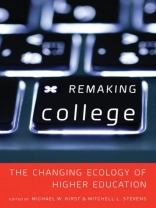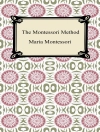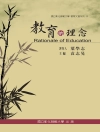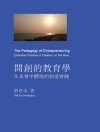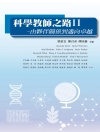Between 1945 and 1990 the United States built the largest and most productive higher education system in world history. Over the last two decades, however, dramatic budget cuts to public academic services and skyrocketing tuition have made college completion more difficult for many. Nevertheless, the democratic promise of education and the global competition for educated workers mean ever growing demand.
Remaking College considers this changing context, arguing that a growing accountability revolution, the push for greater efficiency and productivity, and the explosion of online learning are changing the character of higher education.
Writing from a range of disciplines and professional backgrounds, the contributors each bring a unique perspective to the fate and future of U.S. higher education. By directing their focus to schools doing the lion’s share of undergraduate instruction—community colleges, comprehensive public universities, and for-profit institutions—they imagine a future unencumbered by dominant notions of ‘traditional’ students, linear models of achievement, and college as a four-year residential experience. The result is a collection rich with new tools for helping people make more informed decisions about college—for themselves, for their children, and for American society as a whole.
قائمة المحتويات
Contents and Abstracts
Introduction
chapter abstract
1
Higher Education in America: Multiple Field Perspectives
chapter abstract
Higher education is a complex organization field in which many actors besides colleges and universities support and constrain each other. The field perspective provides historical, structural, and cultural context to recent developments in higher education such as the rise of digital learning, increasing costs, and concerns over learning and completion. The chapter focuses on three distinct field models of higher education as (1) an institutional field; (2) an arena of strategic action; (3) a demand-generated outcome.
2
DIY U: Higher Education Goes Hybrid
chapter abstract
The chapter specifies five ways in which digitally mediated instruction helps fulfill the traditional mission of broad-access schools and the needs of a wide variety of learners. Online learning (1) enables students to learn when and where it is most convenient for them; (2) lowers costs; (3) creates new pathways through college; (4) enables greater personalization and customization of learning; (5) facilitates new connections among students, instructors, and employers.
3
Boom. Regulate. Cleanse. Repeat: For-Profit Colleges’ Slow But Inevitable Drive toward Acceptability
chapter abstract
The chapter chronicles the expansion of the for-profit college sector in recent decades and the cycles of federal regulation and sector expansion that have characterized this growth. The authors suggest a cycle in which rising enrollments are followed by regulatory action spurred by concerns over perceived exploitation of students and government funds. Regulatory crackdown results in a reduced enrollment until entrepreneurial providers find new ways to grow, creating the cycle.
4
The Classification of Organizational Forms: Theory and Application to the Field of Higher Education
chapter abstract
This chapter critiques current classification schemes in higher education, which tend to privilege four-year colleges and universities with liberal-arts curricula. The authors demonstrate a new strategy for delineating organizational categories in higher education using probabilistic topic models and readily available data on students and schools in the United States. This strategy better reveals the wide diversity of forms in this organizational field.
5
The New Landscape of Early Adulthood: Implications for Broad-Access Higher Education
chapter abstract
This chapter describes fundamental changes in early adulthood in recent decades and discusses their implications for higher education. Contemporary young adulthood is defined by the need to manage uncertainty, and the need for interdependence with (rather than independence from) others. Under such conditions, strengthening the transition to adulthood requires strengthening pathways into and through higher education, especially broad-access schools.
6
The ‘Traditional’ College Student: A Smaller and Smaller Minority and Its Implications for Diversity and Access Institutions
chapter abstract
This chapter illustrates how the majority of students attending college in the US do not match conventional images of ‘ideal’ or ‘traditional’ college students. Most US college students are older, more often employed, and less likely to live on campus than popular conceptions imply. Clinging to inaccurate notions college students creates a marginalized majority and has important implications for how we think key policy issues such as college persistence. This chapter calls for a broader conception of diversity in college so that it recognizes the wide variation in life circumstances that characterizes the college-going population.
7
Measuring College Performance
chapter abstract
This chapter specifies the normative and technical aspects of assessment in higher education. Deciding what to measure is a political decision informed by prevailing cultural values and particular understandings of the purposes of higher education. The authors also consider the technical strengths and limitations of various accountability metrics available to policymakers today. The analysis has important implications broad-access colleges because the choice of certain outcomes and measurement strategies privileges some types of schools while disadvantaging others.
8
Explaining Policy Change in K-12 and Higher Education
chapter abstract
This chapter describes the characteristics of US education politics that have variably driven the development of policy for K-12 and higher education, paying particular attention to how the politics of each sector have been shaped by public opinion. The authors offer accounts from multiple theoretical perspectives on how policy is developed in each sector, and leverage the comparison to describe what changes in public opinion might need to occur if higher education is to undergo substantial reorganization.
9
Understanding Human Resources in Broad-Access Higher Education
chapter abstract
This chapter uses extant research and descriptive data to identify important research agendas for understanding human capital in broad-access schools. The authors consider the recruitment, assignment, development and retention of instructors; the role of managers in these processes; and how the roles of managers differ between K-12 and higher education.
10
Improving Collegiate Outcomes at Broad-Access Institutions: Lessons for Research and Practice
chapter abstract
This chapter outlines how colleges can utilize data to identify and evaluate promising practices to improve college completion. The authors focus on using readily available institutional data as the basis for tractable research that might routinely inform better organizational decision-making. The chapter theme is illustrated through an example using data from the California State University system.
11
A Research Framework for US Higher Education
chapter abstract
The chapter offers a matrix for organizing existing research and deriving questions for future scholarship.
عن المؤلف
Michael W. Kirst is Professor Emeritus of Education and Business Administration at Stanford University and the current President of the California State Board of Education. Mitchell L. Stevens is Associate Professor of Education at Stanford University and (by courtesy) Business and Sociology at Stanford University.
